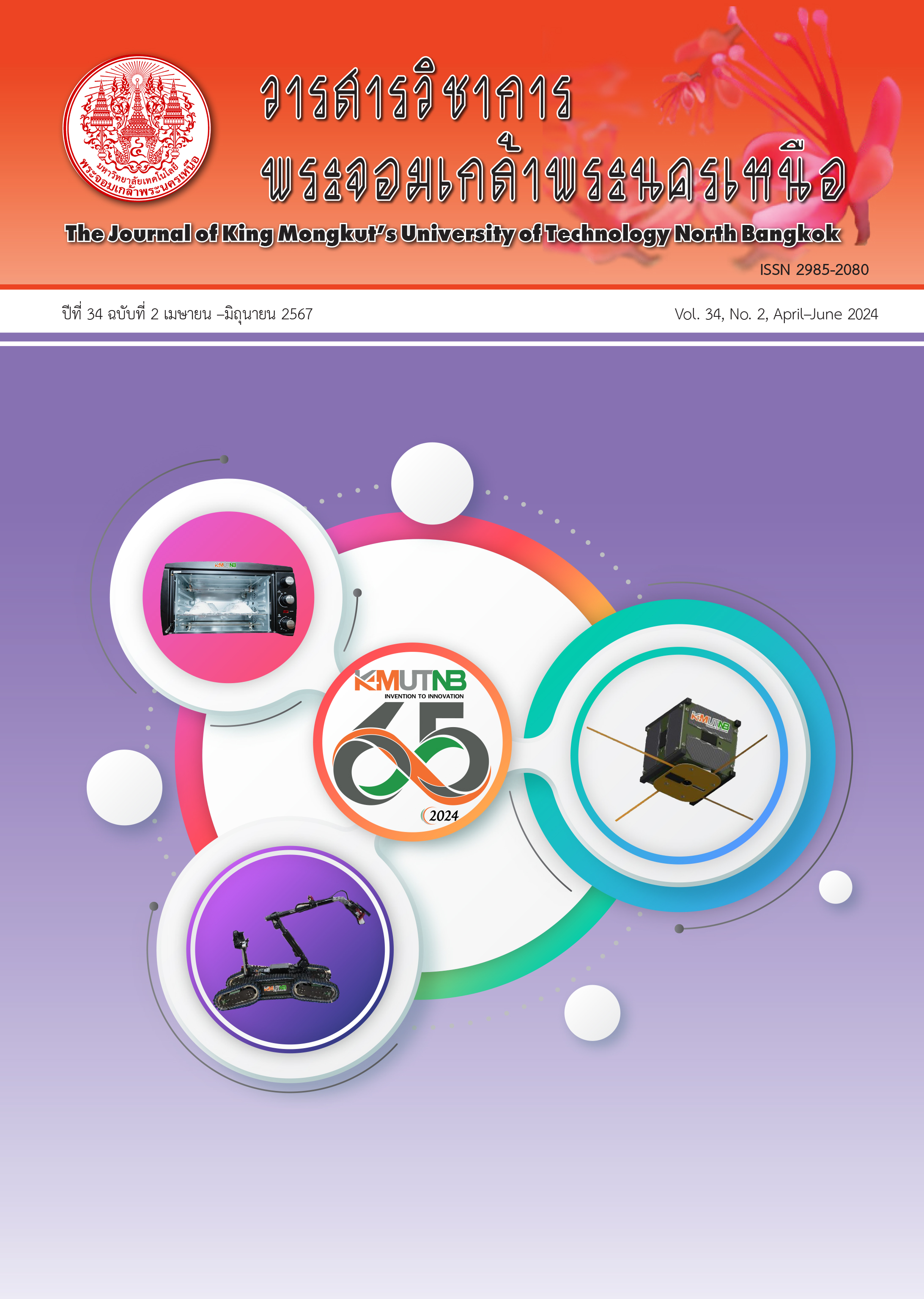แบบจำลองลอจิตสำหรับพฤติกรรมการเลือกรูปแบบการเดินทางและการประยุกต์ใช้สำหรับการเดินทางท่องเที่ยวสู่ภาคตะวันออก
Main Article Content
บทคัดย่อ
พฤติกรรมการตัดสินใจเลือกรูปแบบการเดินทางเป็นสิ่งที่ยากจะเข้าใจและนำไปใช้ในการวางนโยบายแผนการขนส่งงานวิจัยนี้จึงประยุกต์แบบจำลองลอจิตเพื่อวิเคราะห์การเลือกรูปแบบการเดินทางสำหรับการเดินทางท่องเที่ยวไปยังภาคตะวันออกของประเทศไทยซึ่งเป็นพื้นที่ท่องเที่ยวสำคัญของประเทศและวิเคราะห์อิทธิพลของปัจจัยที่หลากหลาย เช่น ลักษณะการให้บริการของรูปแบบการขนส่งต่างๆ ข้อมูลด้านเศรษฐกิจสังคมของผู้ตัดสินใจ เป็นต้น ข้อมูลการสำรวจแบบกำหนดสถานการณ์จำลอง (Stated Preference) ของผู้เดินทางจำนวน 405 คน ถูกนำไปสร้างแบบจำลองลอจิตพหุและเนสเต็ดลอจิต ผลลัพธ์แสดงให้เห็นราคาค่าโดยสารและความถี่การให้บริการเป็นปัจจัยที่มีความสำคัญมากต่อการเลือกใช้รถโดยสารประจำทาง เวลาเดินทางมีความสำคัญอย่างยิ่งต่อการเลือกใช้รถไฟความเร็วสูง แบบจำลองที่ได้เป็นประโยชน์ต่อความเข้าใจเกี่ยวกับพฤติกรรมการเดินทางไปยังภาคตะวันออกด้วยรถไฟความเร็วสูง รถประจำทาง และรถตู้โดยสาร รวมไปถึงการปรับปรุงนโยบายบริการรถสาธารณะ เช่น การปรับปรุงรถไฟความเร็วสูงให้มีความเร็วและความถี่มากขึ้นจะช่วยให้นักท่องเที่ยวพึงพอใจมากกว่าปัจจัยอื่น และเนื่องจากผู้สูงวัยมีความนิยมเลือกใช้รถส่วนตัวมากกว่ารถสาธารณะโดยเฉพาะอย่างยิ่งสำหรับรถไฟความเร็วสูง ดังนั้นการกำหนดนโยบายเพื่อวางแผนและออกแบบสิ่งอำนวยความสะดวกบนรถไฟความเร็วสูงและสถานีการออกแบบเพื่อมวลชน (Universal Design) จะต้องได้รับการออกแบบอย่างเหมาะสมสำหรับยุคสังคมสูงวัย
Article Details

อนุญาตภายใต้เงื่อนไข Creative Commons Attribution-NonCommercial-NoDerivatives 4.0 International License.
บทความที่ลงตีพิมพ์เป็นข้อคิดเห็นของผู้เขียนเท่านั้น
ผู้เขียนจะต้องเป็นผู้รับผิดชอบต่อผลทางกฎหมายใดๆ ที่อาจเกิดขึ้นจากบทความนั้น
เอกสารอ้างอิง
F. S. Koppelman and C. Bhat, A self instructing course in mode choice modeling: multinomial and nested logit models. FTA, United States: Federal Transit Administration, 2006.
Team Consulting Engineering and Management and Sasin Graduate Institute of Business Administration. (2018). The High-Speed Rail Linked 3 Airport Project, Final Report (Complete Edition). State Railway of Thailand. Bangkok, Thailand. [Online]. (in Thai). Available: https:// www.eeco.or.th/th/filedownloads/1869/filece1677dc3f62605b63154178eb0bbaba. pdf
K. E. Train, Discrete choice methods with simulation. Cambridge university press, 2009.
N. Ashford and M. Benchemam, Passengers' choice of airport: an application of the multinomial logit model. Loughborough University of Technology Department of Transport Technology, 1987.
D. A. Hensher and J. M. Rose, “Development of commuter and non-commuter mode choice models for the assessment of new public transport infrastructure projects: a case study,” Transportation Research Part A: Policy and Practice, vol. 41, no. 5, pp. 428–443, 2007.
N. Koatbua and K. Rungjang, “Choice model for long distance travels by train and application to logit model for lower-northeastern line,” The Journal of KMUTNB, vol. 31, no. 3, pp. 450–460, 2021 (in Thai).
Y. Liu, J. Chen, W. Wu, and J. Ye, “Typical combined travel mode choice utility model in multimodal transportation network,” Sustainability, vol. 11, no. 2, pp. 549, 2019.
A. Polydoropoulou and M. Ben-Akiva, “Combined revealed and stated preference nested logit access and mode choice model for multiple mass transit technologies,” Transportation Research Record, vol. 1771, no. 1, pp. 38–45, 2001.
Ministry of Tourism and Sports. (2020). Domestic Tourism Statistics ( Classify by region and province 2020). Domestic Tourism Statistics. Bangkok, Thailand. [Online] (in Thai). Available: https:// www.mots.go.th/more_news_new.php?cid=594
M. E. Ben-Akiva and S. R. Lerman, Discrete choice analysis: theory and application to travel demand. MIT press, 1985.
F. Heiss, “Structural choice analysis with nested logit models,” The Stata Journal, vol. 2, no. 3, pp. 227–252, 2002.
N. Sanko, “Guidelines for stated preference experiment design,” Master of Business Adminstration diss., Ecole Nationale des Ponts et Chaussées. s, 2001.
D. A. Hensher, J. M. Rose, and W. H. Greene, Applied choice analysis: a primer. Cambridge university press, 2005.
R. F. Gunst and R. L. Mason, “Fractional factorial design,” Wiley Interdisciplinary Reviews: Computational Statistics, vol. 1, no. 2, pp. 234–244, 2009.
Y. A. Youssef, Y. Beauchamp, and M. Thomas, “Comparison of a full factorial experiment to fractional and Taguchi designs in a lathe dry turning operation,” Computers and Industrial Engineering, vol. 27, no. 1–4, pp. 59–62, 1994.
R. L. Mason, R. F. Gunst, and J. L. Hess, Statistical design and analysis of experiments: with applications to engineering and science. John Wiley & Sons, 2003.
P. E. Green, “On the design of choice experiments involving multifactor alternatives,” Journal of Consumer Research, vol. 1, no. 2, pp. 61–68, 1974.
T. Yamane, Statistics: An introductory analysis. Harper & Row, 1967.
M. González-Savignat, “Will the high-speed train compete against the private vehicle?,” Transport Reviews, vol. 24, no. 3, pp. 293–316, 2004.
Y. Wang, L. Li, L. Wang, A. Moore, S. Staley, and Z. Li, “Modeling traveler mode choice behavior of a new high-speed rail corridor in China,” Transportation Planning and Technology, vol. 37, no. 5, pp. 466–483, 2014.

